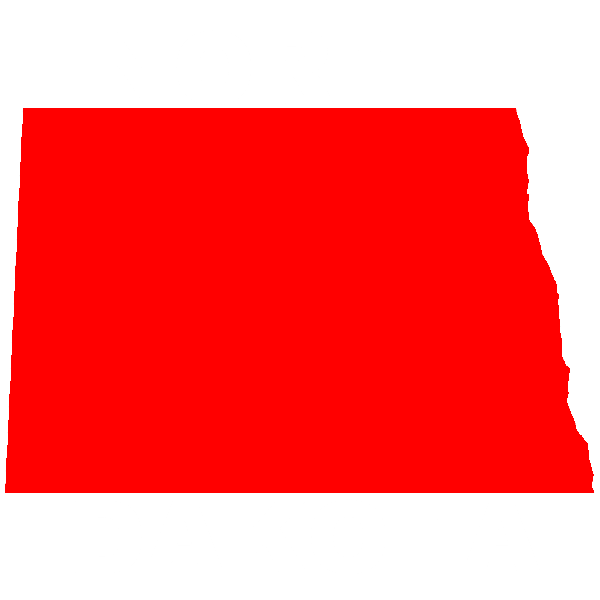BPS District Social Studies Standards Book
Completion requirements
SST Domains
History K-12
SST-K_5.H History Domain
Perspectives
- SST-00.H.1 | SST-01.H.1 | SST-02.H.1
Compare perspectives of people in the past to those of people in the present. - SST-0.H.02 | SST-1.H.02 | SST-2.H.02
Begins in Grade 3 - SST-0.H.03 | SST-1.H.03 | SST-2.H.03
Begins in Grade 3
- SST-03.H.01 | SST-04.H.01 | SST-05.H.01
Compare and contrast multiple perspectives during the same time period, event, or historical period. - SST-03.H.02 | SST-04.H.02 | SST-05.H.02
Describe how people’s perspectives shape history. - SST-03.H.03 | SST-04.H.03 | SST-05.H.03
 Describe the North Dakota Native American Essential Understandings.
Describe the North Dakota Native American Essential Understandings.
Cause-Effect & Current Events
- SST-00.H.2 | SST-01.H.2 | SST-02.H.2
Describe United States national holidays or days of observance and the reason they are celebrated. - SST-00.H.3 | SST-01.H.3 | SST-02.H.3
Describe current events.
- SST-03.H.04 | SST-04.H.04 | SST-05.H.04
Analyze United States national holidays or days of observance and the impact on the culture of the United States. - SST-03.H.05 | SST-04.H.05 | SST-05.H.05
 Describe multiple causes and effects of contemporary global events and developments in relation to North Dakota.
Describe multiple causes and effects of contemporary global events and developments in relation to North Dakota. - SST-03.H.06 | SST-04.H.06 | SST-05.H.06
Describe multiple causes and effects of contemporary global events and developments in relation to the United States.
Connections, Contributions, Historical Source & Evidence
- SST-00.H.4 | SST-01.H.4 | SST-02.H.4
Demonstrate chronological thinking by describing changes in the community over time. - SST-00.H.5 | SST-01.H.5 | SST-02.H.5
Explain how individuals and groups have made significant historical changes. - SST-0.H.08 | SST-1.H.08 | SST-2.H.08
Begins in Grade 3 - SST-0.H.09 | SST-1.H.09 | SST-2.H.09
Begins in Grade 3
- SST-03.H.07 | SST-04.H.07 | SST-05.H.07
Explain cause and effect relationships among historical events in the United States using primary and secondary sources.
- SST-03.H.08 | SST-04.H.08 | SST-05.H.08
Explain how individuals contributed to the United States throughout different historical eras using primary and secondary sources. - SST-03.H.09 | SST-04.H.09 | SST-05.H.09
 Explain how individuals and groups contributed to North Dakota.
Explain how individuals and groups contributed to North Dakota. - SST-03.H.10 | SST-04.H.10 | SST-05.H.10
 Describe the events and developments that led to the statehood of North Dakota.
Describe the events and developments that led to the statehood of North Dakota.

Anchor
SST-08.US_a Anchor Standards
- SST-08.US_a.01 Analyze primary and secondary sources with attention to reliability, impact, and purpose.
- SST-08.US_a.02 Examine the impact of multiple perspectives on social, political, and cultural development.
- SST-08.US_a.03 Explain the relationship of events focusing on the link(s) between cause and effect.
- SST-08.US_a.04 Compare how historical elements change over time.
- SST-08.US_a.05 Analyze the significant contributions of people and policy, and the influence on an era.
- SST-08.US_a.06 Connect the past to the present using current events.
- SST-HS.US_a.01 Analyze primary and secondary sources with attention to reliability, impact, and purpose.
- SST-HS.US_a.02 Examine the impact of multiple perspectives on social, political, and cultural development.
- SST-HS.US_a.03 Explain the relationship of events focusing on the link(s) between cause and effect.
- SST-HS.US_a.04 Compare how historical elements change over time.
- SST-HS.US_a.05 Analyze the significant contributions of people and policy, and the influence on an era.
- SST-HS.US_a.06 Connect the past to the present using current events.
SST-08.US_e1.b (1754-1814) Era 1: Creation and Foundation of United States Government.
- SST-08.US_e1.b1 Explain the social, political, and cultural causes and immediate consequences of the American Revolution.
- SST-08.US_e1.b2 Explain the development of early United States government.
- SST-08.US_e1.b3 Explain the development of United States society after the American Revolution.
- SST-08.US_e1.b4 Explain the importance of foreign and domestic decisions of the early United States government, its leaders, and political parties.
SST-08.US_e2.b (1814-1877) Era 2: Growth and Division in the Union.
- SST-08.US_e2.b1 Analyze the impacts of social, religious, and/or cultural movements.
- SST-08.US_e2.b2 Compare and contrast how the causes of the sectional divide within the United States impacted federal policy.
- SST-08.US_e2.b3 Explain how westward expansion affected the social, economic, and political landscape of the United States.
- SST-08.US_e2.b4 Explain the changing Native American federal policy and the impact on tribal sovereignty.
- SST-08.US_e2.b5 Explain the social, economic, and political causes and effects of the Civil War.
- SST-08.US_e2.b6 Explain the social, economic, and political effects of Reconstruction.
SST-08.US_e3.b (1877-1941) Era 3:
- SST-08.US_e3.b1 Explain the causes and consequences of the Industrial Revolution on American society.
- SST-08.US_e3.b2 Explain the social, cultural, and economic impact of local, state, and federal government policy on American people.
- SST-08.US_e3.b3 Explain the impact of the United States’ transformation into an imperialist power.
- SST-08.US_e3.b4 Explain the causes and effects of the United States’ entrance into World War I.
- SST-08.US_e3.b5 Explain the political, social and economic changes of the 1920s.
- SST-08.US_e3.b6 Explain the political, social and economic events of the 1930s.
- SST-HS.US_e3.b1 Explain the causes and consequences of the Industrial Revolution on American society.
- SST-HS.US_e3.b2 Explain the social, cultural, and economic impact of local, state, and federal government policy on American people.
- SST-HS.US_e3.b3 Explain the impact of the United States’ transformation into an imperialist power.
- SST-HS.US_e3.b4 Explain the causes and effects of the United States’ entrance into World War I.
- SST-HS.US_e3.b5 Explain the political, social and economic changes of the 1920s.
- SST-HS.US_e3.b6 Explain the political, social and economic events of the 1930s.
SST-HS.US_e4.b (1941-2001) Era 4:
- SST-HS.US_e4.b1 Explain the causes and consequences of U.S. involvement in World War II.
- SST-HS.US_e4.b2 Explain the economic and/or social issues of the era and their long-lasting effects.
- SST-HS.US_e4.b3 Explain the United States' reactions toward the growth of communism.
- SST-HS.US_e4.b4 Explain the impact of rapid technological change on society.
- SST-HS.US_e4.b5 Compare and contrast how different groups competed for equality and the effectiveness of various movements.
- SST-HS.US_e4.b6 Identify and explain how domestic issues changed United States' perceptions of government.
SST-HS.US_e5.b (2001-present) Era 5:
- SST-HS.US_e5.b1 Connect the changing political and social climate to United States' involvement as a global superpower.
- SST-HS.US_e5.b2 Explain the social, cultural, and economic impact of changes because of technology.
- SST-HS.US_e5.b3 Explain the social, political, and cultural influences on government policies regarding global immigration.

Anchor
SST-06.WH_a Anchor Standards
- SST-06.WH_a.01 Analyze historical achievements related to science and technology.
- SST-06.WH_a.02 Explain historical changes related to religions and ideologies.
- SST-06.WH_a.03 Analyze the effects of different political systems on people.
- SST-06.WH_a.04 Analyze the influence of social, cultural, and economic developments on individuals.
- SST-06.WH_a.05 Analyze causes and effects of global events in the past using primary and/or secondary sources.
- SST-06.WH_a.06 Explain how past events connect to the present.
- SST-HS.WH_a.01 Analyze historical achievements related to science and technology.
- SST-HS.WH_a.02 Explain historical changes related to religions and ideologies.
- SST-HS.WH_a.03 Analyze the effects of different political systems on people.
- SST-HS.WH_a.04 Analyze the influence of social, cultural, and economic developments on individuals.
- SST-HS.WH_a.05 Analyze causes and effects of global events in the past using primary and/or secondary sources.
- SST-HS.WH_a.06 Explain how past events connect to the present.
SST-06.WH_e1.b | SST-HS.WH_e1.b Era 1: Emergence of Civilizations and Religions Around the Globe
- SST-06.WH_e1.b1 Explain multiple achievements of civilizations and connect them to the present.
- SST-06.WH_e1.b2 Describe the belief systems or religions of early civilizations.
- SST-06.WH_e1.b3 Explain the impact of the development of agriculture on the social, cultural, and economic lives of individuals.
- SST-06.WH_e1.b4 Explain how political systems impacted the people in Greece and Rome and how those political systems connect to the present
- SST-HS.WH_e1.b1 Explain multiple achievements of civilizations and connect them to the present.
- SST-HS.WH_e1.b2 Describe the belief systems or religions of early civilizations.
- SST-HS.WH_e1.b3 Explain the impact of the development of agriculture on the social, cultural, and economic lives of individuals.
- SST-HS.WH_e1.b4 Explain how political systems impacted the people in Greece and Rome and how those political systems connect to the present
SST-06.WH_e2.b | SST-HS.WH_e2.b Era 2: Middle Ages and the Renaissance
- SST-06.WH_e2.b1 Explain the causes and effects of Medieval social structures using primary and secondary sources.
- SST-06.WH_e2.b2 Explain how the relationship between religious and political bodies impacted the social, cultural, or economic developments of individuals.
- SST-06.WH_e2.b3 Explain the emergence of cultural interaction between Europe and other civilizations.
- SST-HS.WH_e2.b1 Explain the causes and effects of Medieval social structures using primary and secondary sources.
- SST-HS.WH_e2.b2 Explain how the relationship between religious and political bodies impacted the social, cultural, or economic developments of individuals.
- SST-HS.WH_e2.b3 Explain the emergence of cultural interaction between Europe and other civilizations.
SST-HS.WH_e3.b Era 3: Age of Revolutions
- SST-HS.WH_e3.b1 Explain the causes and global effects of religious division.
- SST-HS.WH_e3.b2 Explain the global connections developed during this era because of exploration.
- SST-HS.WH_e3.b3 Examine and explain the influence of revolutions on social and political aspects of individuals' lives.
- SST-HS.WH_e3.b4 Explain advancements related to science and technology and the global impact of these advancements.
SST-HS.WH_e4.b Era 4: Age of Global War and Globalization
- SST-HS.WH_e4.b1 Analyze the causes and global effects of the world wars.
- SST-HS.WH_e4.b2 Explain how political or social ideologies shaped the 20th century.
- SST-HS.WH_e4.b3 Explain the social, cultural, or economic changes influenced by globalization.
SST-08.H | SST-HS.H History Domain
SST-08.ND.01 | SST-HS.ND.01
Examine the physical and human geography of North Dakota and how it has changed.
- SST-08.ND.01.1 Identify the three landscape regions of North Dakota and describe the major features of the regions and the forces that formed them.
- SST-08.ND.01.2 Explain the human settlement patterns in North Dakota.
- SST-08.ND.01.3 Interpret current thematic maps to identify where people live and work, and how land is used.
- SST-HS.ND.01.1 Identify the three landscape regions of North Dakota and describe the major features of the regions and the forces that formed them.
- SST-HS.ND.01.2 Explain the human settlement patterns in North Dakota.
- SST-HS.ND.01.3 Interpret current thematic maps to identify where people live and work, and how land is used.
SST-08.ND.02 | SST-HS.ND.02
Explain the development and functions of North Dakota’s state and local governments, tribal governments and the role of citizens.
- SST-08.ND.02.1 Describe the structure, role, and formation of tribal governments, both present and past, in North Dakota.
- SST-08.ND.02.2 Describe the formation, structure, and modern role of the territorial, state, county, and local government of North Dakota.
- SST-08.ND.02.3 Explain the impact of political organizations and individual citizens on the political systems and institutions of North Dakota.
- SST-HS.ND.02.1 Describe the structure, role, and formation of tribal governments, both present and past, in North Dakota.
SST-HS.ND.02.2 Describe the formation, structure, and modern role of the territorial, state, county, and local government of North Dakota.
SST-HS.ND.02.3 Explain the impact of political organizations and individual citizens on the political systems and institutions of North Dakota.
SST-08.ND.03 | SST-HS.ND.03
Evaluate the major industries and economic activities in North Dakota.
- SST-08.ND.03.1 Describe the early economic activities of our state prior to 1900 and how they developed into North Dakota's modern economy.
- SST-08.ND.03.2 Identify the current economic activities in the state of North Dakota and evaluate their positive and negative impact.
- SST-HS.ND.03.1 Describe the early economic activities of our state prior to 1900 and how they developed into North Dakota's modern economy.
- SST-HS.ND.03.2 Identify the current economic activities in the state of North Dakota and evaluate their positive and negative impact.
SST-08.ND.04 | SST-HS.ND.04
Analyze the historical and current events and their impact on the development of North Dakota.
- SST-08.ND.04.1 Identify the Native American groups in North Dakota before European contact and describe their culture.
- SST-08.ND.04.2 Analyze European exploration and early settlement of North Dakota and its impact on Native American groups.
- SST-08.ND.04.3 Describe the major factors that brought settlers to North Dakota.
- SST-08.ND.04.4 Analyze the effect of government policy, both historical and modern, toward Native American groups in North Dakota.
- SST-08.ND.04.5 Evaluate the growth and struggles of the modernization of North Dakota and the role the state has played in modern America.
- SST-08.ND.04.6 Use various primary and secondary resources to acquire, analyze, and evaluate information.
- SST-HS.ND.04.1 Identify the Native American groups in North Dakota before European contact and describe their culture.
- SST-HS.ND.04.2 Analyze European exploration and early settlement of North Dakota and its impact on Native American groups.
- SST-HS.ND.04.3 Describe the major factors that brought settlers to North Dakota.
- SST-HS.ND.04.4 Analyze the effect of government policy, both historical and modern, toward Native American groups in North Dakota.
- SST-HS.ND.04.5 Evaluate the growth and struggles of the modernization of North Dakota and the role the state has played in modern America.
- SST-HS.ND.04.6 Use various primary and secondary resources to acquire, analyze, and evaluate information.
|
|
|
|
